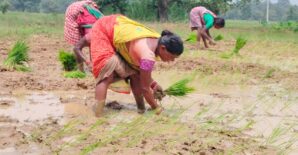
Source: IFPRI
The capacity development activities of a researcher not only contribute to research outputs but can also have an indirect effect on future research outputs and the capacities of other colleagues who collaborate with them. Further, the skills developed through capacity building activities increase the productivity of research investments made through India Council for Agriculture Research (ICAR) and State Agriculture Universities (SAUs). While considerable evidence exists on the impact of the technological innovations from agricultural research programs, rigorous evaluations of the impact of capacity development programs on the research outputs and productivity of researchers remain at their incipient stage The major objective of this evaluation study is to document the impact of the capacity strengthening activities under the National Agriculture Innovation Program (NAIP) on the national agricultural research system. The specific objectives of the evaluation include: Trace the inputs and investments in capacity strengthening through NAIP in the form of various activities
- Identify and document various outputs in the form of thematic and research skills developed through the NAIP capacity building approaches
- Document the benefits of the capacity strengthening activities in the form of improved productivity of the researchers in terms of both quantity and quality of their outputs
- Identify and develop specific examples of the contributions of the capacity created on the technological innovation
- Identify conditions for success of various mode of capacity strengthening programs for different categories of researchers
- Document the evidence of development of collaborative research programs and networks as a result of the capacity development programs.
Approach:
The evaluation study will use the following methods for assessing the impact of the capacity development approaches on agricultural research:
- documentation of lessons learned based on participants’ personal experience and observation;
- a more formal assessment using qualitative analysis based on pre-set output, outcome, or impact criteria; and
- impact assessment using quantitative analysis using a formal questionnaires to both the beneficiaries and their counterfactuals
Time line: 2012 - March 2014
Geographical Area: India


